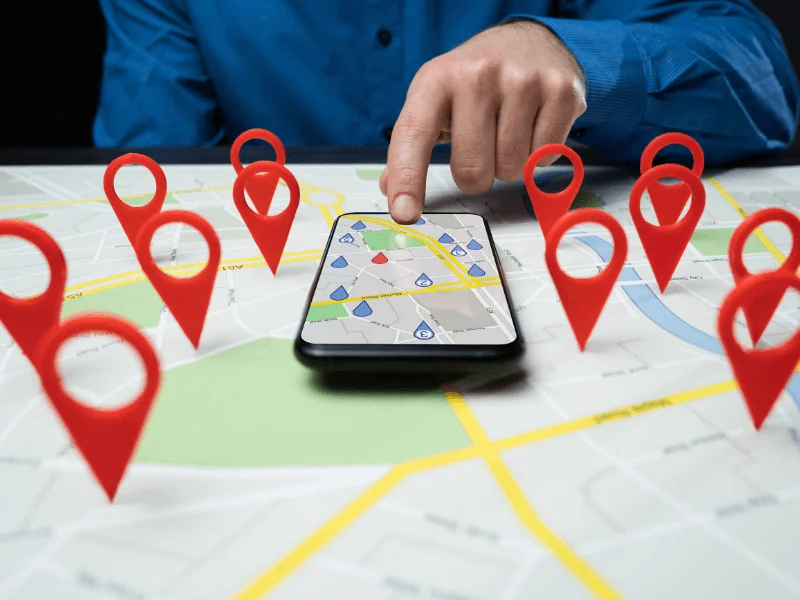The first page of Google is valuable real estate, but in 2025, there’s a prize even more coveted. When users search for businesses nearby, Google often displays a box of three prominent local listings above the organic results. This is the Google Local 3 Pack, a showcase of the most relevant, high-performing businesses in any market.
Competition is fierce, and algorithms have grown more sophisticated, and only those who deeply understand local SEO can earn and maintain their spot. Getting into the Local 3 Pack isn’t about luck or quick tricks; it’s about building credibility, trust, and digital authority in a way Google recognizes instantly.
Understanding the Google Local 3 Pack
When a user searches for a service or product with local intent, Google returns a visual snippet featuring three top listings, each with a map, contact info, star ratings, and direct links for calls or directions. Appearing here means maximum exposure, instant credibility, and a dramatic uptick in qualified leads.
But how does Google decide who gets in? Three core pillars determine inclusion: relevance, proximity, and prominence. Understanding and optimizing for each is essential. And delving into a comprehensive local SEO strategy can provide a broader perspective on these foundational elements.
Relevance: Aligning Your Business with Search Intent
Relevance is about matching your business profile and content to the searcher’s intent. Google’s algorithms now process not only business categories but also services, attributes, and the nuanced language of your site.
To boost relevance:
- Update your Google Business Profile with complete, up-to-date information. Select the primary category that best represents your business, and utilize all available secondary categories to encompass your entire range of offerings.
- Write compelling business descriptions that naturally include the main keyword and key services, focusing on clarity, accuracy, and local context.
- Ensure every landing page answers the core questions potential customers might ask when looking for your service.
Proximity: Being Found Where Customers Search
Proximity is the distance between the searcher and your business location. While you can’t move your business closer to every customer, you can signal your location and service areas with strategic precision.
To enhance proximity signals:
- Display your address and service areas on every page of your website. Use schema markup to help Google understand your locations.
- Regularly update your Google Business Profile to reflect changes in address or service boundaries.
- Reference neighborhoods, city districts, and landmarks in your content to build local relevance without stuffing keywords.
Prominence: Building Authority and Trust in Your Community
Prominence is earned through a strong reputation, high visibility, and active online presence. Businesses recognized as community leaders, experts, or reliable providers consistently outperform less active competitors.
Strategies for building prominence include:
- Generating high-quality Google reviews. Respond to every review in a timely and authentic manner, using language that reflects your brand’s values.
- Consistently adding fresh content to your Google Business Profile. Post offers, events, photos, and updates to keep your listing active and engaging.
- Earning mentions and backlinks from reputable local websites, media, and organizations. This includes partnerships, sponsorships, or being cited as a trusted resource.
Optimizing On-Page Elements for Local SEO Success
To support your Local 3 Pack ambitions, your website must be tuned for both humans and search engines.
Key steps include:
- Use your main keyword and related phrases naturally in H1 tags, titles, meta descriptions, and throughout your site content.
- Ensuring fast load times, mobile responsiveness, and an intuitive user experience. These are non-negotiable for local SEO success. Our dedicated guide on mobile optimization for local SEO can provide in-depth insights into making your site perform seamlessly on all devices.
- Providing complete, accurate contact information on every page.
- Adding original, location-specific content that speaks to your audience’s needs.
Leveraging Google Business Profile to Stand Out
Your Google Business Profile (GBP) is often the first impression potential customers have of your business. In 2025, Google rewards profiles that are not just claimed but actively managed. For a deeper dive into maximizing its potential, explore our comprehensive guide on Google Business Profile optimization best practices.
Best practices for GBP optimization:
- Complete every section, including business hours, categories, services, and attributes.
- Upload high-quality, recent photos that showcase your products, staff, or location.
- Add special offers, events, or news directly to your profile regularly.
- Use the Q&A feature to answer common customer queries in detail, establishing authority before contact is even made.
Generating and Managing Google Reviews
Reviews have become an integral ranking signal, but they’re also a window into your business for new customers.
Steps for effective review management:
- Proactively request reviews from satisfied customers through clear calls to action on your website and in follow-up communications. If you’re looking for practical methods to encourage more feedback, our article on how to ask for a Google review offers actionable strategies.
- Respond to every review, thanking customers for positive feedback and addressing any concerns or complaints professionally.
- Monitor your review profile for trends, using feedback to improve your services and your messaging.
Technical Enhancements for Local Search Dominance
Modern SEO isn’t only about content. Technical performance plays a vital role in Google’s ranking decisions.
Focus on these essentials:
- Implement structured data (schema) to communicate business types, services, and locations.
- Monitor your site’s health using tools like Google Search Console and promptly address any crawl errors or mobile usability issues.
- Optimize for voice and conversational search by answering common customer questions in natural, direct language throughout your site.
Measuring and Adjusting Your Local 3-Pack Strategy
Success in the Google Local 3 Pack is dynamic. Continually track and refine your efforts for ongoing improvement. For businesses seeking to consistently outpace their competition, collaborating with a local SEO company that offers continuous monitoring and strategic adjustments is essential.
Monitor:
- Impressions, clicks, and conversions from your GBP dashboard
- Local keyword rankings and map visibility using specialized tracking tools
- Engagement rates for profile posts and photo views
- Trends in review volume, sentiment, and response time
Regular adjustments based on these insights ensure your business remains visible, relevant, and compelling in the local marketplace.
Avoiding Common Pitfalls
Many businesses lose their Local 3 Pack advantage by overlooking essential details:
- Ignoring negative reviews or failing to respond
- Leaving profiles incomplete or out of date
- Using duplicate content or inconsistent business information
- Over-optimizing with unnatural keyword use
Precision, transparency, and authentic engagement ultimately prevail.
The Future of Google Local 3-Pack Optimization
With each update, Google’s focus on real-world authority, engagement, and user experience becomes clearer. In the years ahead, expect deeper integration of AI-driven reviews, richer profile features, and more nuanced local ranking factors.
The businesses that thrive will be those that anticipate change, prioritize the customer’s experience, and commit to continuous learning.
Final Thoughts
Earning a spot in the Google Local 3 Pack in 2025 is both an art and a science. It demands clarity, commitment, and a relentless focus on the fundamentals. Those who invest in optimizing relevance, proximity, and prominence, while delivering a seamless online and offline experience, will consistently outpace their competition and become the first choice for local customers.

